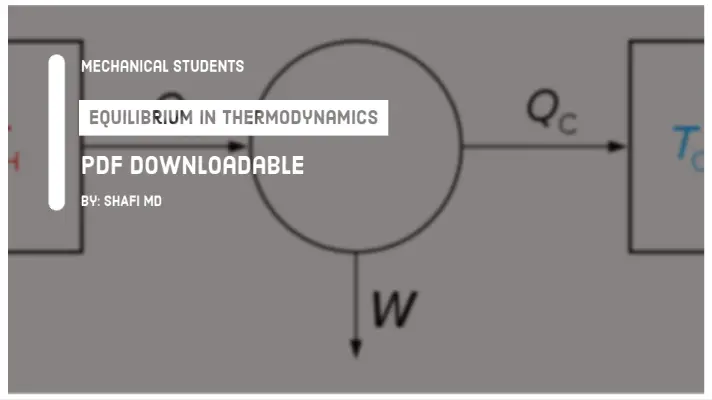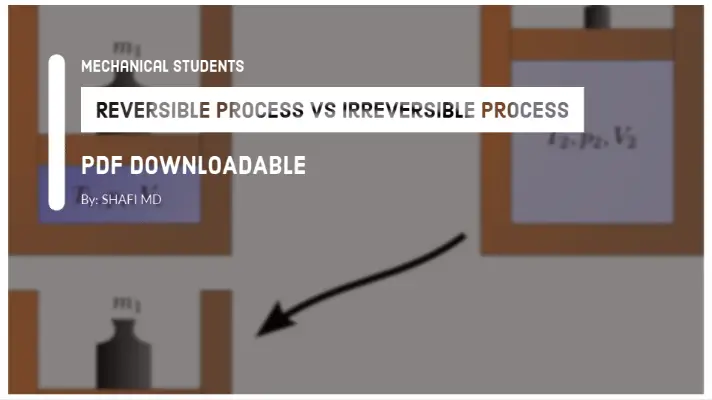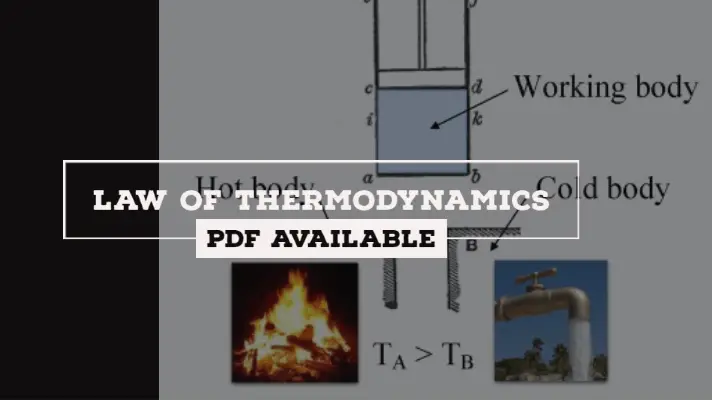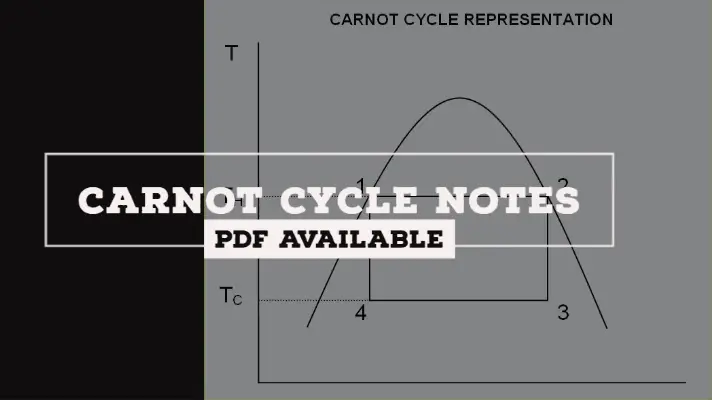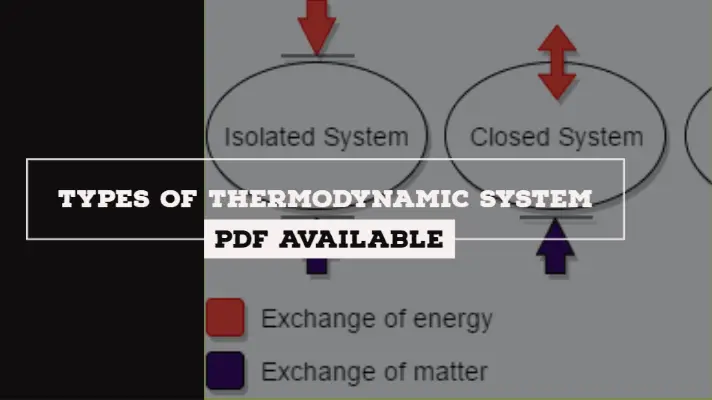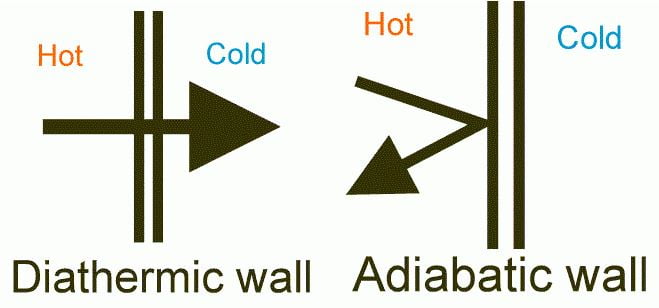Macroscopic and Microscopic Properties [approach] of a Thermodynamic System [With PDF]
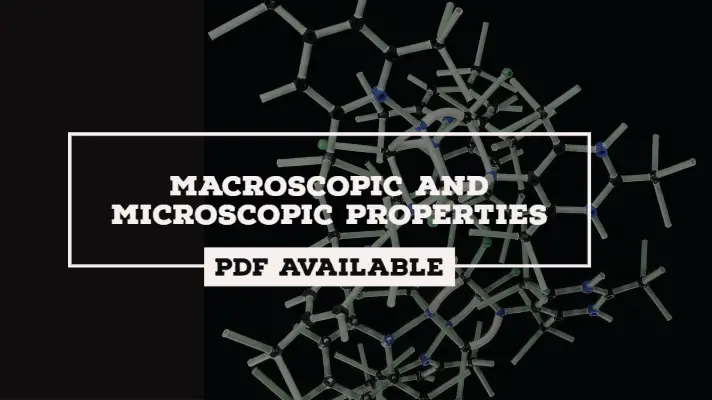
Download the PDF below!
A thermodynamic system can be explained by taking into account by macroscopic and microscopic approach. In this article, I am going to explain about the Macroscopic and Microscopic approach of a thermodynamic system in a detailed manner.
Macroscopic approach:
- No assumptions are to be made regarding the structure of matter.
- Very few parameters are required to specify the state of a system like Pressure&Volume, Volume & Temp, Temperature & Pressure.
- They can be easily measured.
- They can be felt by sense perceptions.
Microscopic Properties [approach]:
- Molecular theory of matter is assumed.
- Many parameters are required to specify the state of a system.
- For every molecule,3-position Coordinates & 3-velocity Coordinates are required.
- For 1 mole of a gas,(6*6.023*10^23) coordinates are required.
- They can’t be easily measured.
- They can’t be felt by sense perceptions.
Hence, though the approaches are different in explaining the thermodynamic system, the conclusions are the same.
This is the complete explanation of Macroscopic and Microscopic Properties [approach] of a thermodynamic system which is shown in a detailed manner.
If you have any doubts, feel free to ask from the comments section. Please Share and Like this blog with the whole world so that it can reach to many.


